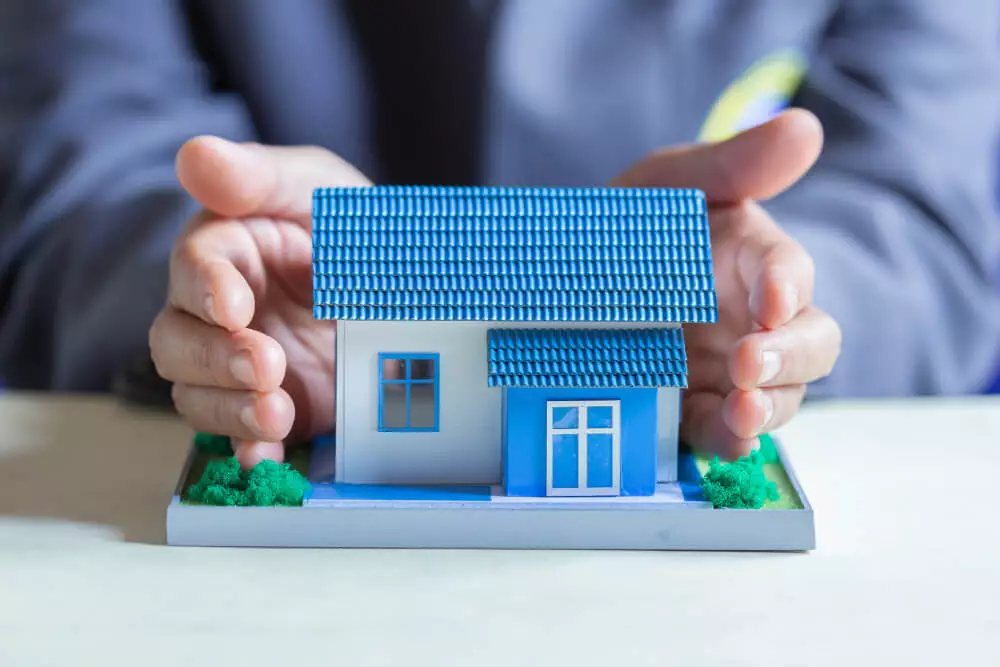
You can get a HELOC or home equity line of credit by pledging the equity in your home. Credit lines, like credit cards, are set up for borrowers to only pay interest on the amount they use rather than taking out a lump sum.
HELOC funds can be used for various purposes, including home renovations, education, and even vacations.
Also, it can be helpful for those who have run out of options for paying off their mounting debts. HELOCs are popular because they simplify consumers to obtain the cash they require.
If you want to avoid financial difficulties, you should familiarize yourself with how a HELOC works.
Table of Contents
What Is A HELOC (Home Equity Line of Credit)?
A home equity line of credit (HELOC) is a credit line secured by your home that can be used for anything. A HELOC is similar to a credit card in that you can spend up to your credit line limit.
Unlike a loan, you will only be required to pay back what you spend instead of the total amount of the lump sum you receive upfront.
HELOCs are typically structured on a 30-year basis, with a 10-year draw period during which you can spend your HELOC, followed by a 20-year repayment period to pay off whatever you spent.
How Does A HELOC Work?
A HELOC is similar to a credit card in that it allows you to withdraw funds up to the amount of your credit limit. However, even if you have access to funds, it is critical to borrow only what you require.
In general, you can choose between variable and fixed interest rates, depending on your circumstances. You have access to the revolving line of credit for a specified period of time, referred to as the draw period.
You’ll make payments toward the balance during the draw period but may continue to draw funds up to your available limit.
When the draw period expires, the repayment period begins, during which you will repay the remaining balance before the maturity date.
Common Uses for (HELOC) Home Equity Lines of Credit
Using your HELOC is entirely up to you. If you want to blow it all on vacation, go ahead. But make sure you don’t spend it in a way you’ll later regret. You shouldn’t put your house on the line if you don’t have a solid financial strategy in place first.
Check out some of these suggestions if you’re not sure what you could use a HELOC for:
Medical expenses: A HELOC can be used to pay for a costly medical procedure or repay the medical debt affecting your credit score.
Start a business: Don’t let a lack of funds be the reason your company never gets off the ground. You can use a HELOC to get things started if you have a good business idea.
Education: A HELOC can be used to pay for school or to repay student loans with higher interest rates.
Debt consolidation: Consolidating your debts with a HELOC could make your life easier by lowering your monthly payments and lowering the amount you lose on interest.
Home improvements: The value of your home could be increased by replacing the garage door or remodeling the kitchen or bathroom. Alternatively, you could use a HELOC to repair damage to your home that isn’t covered by insurance.
Pros and Cons of HELOCs
| Pros | Cons |
| 1. Lower interest rates 2. Option to fix your rate 3. Use the money for anything 4. Only pay for what you spend 5. Some HELOCs come with intro offers 6. Your credit limit will be higher than on most credit cards | 1. Minimum withdrawal amount 2. There is a set draw period 3. There may be some hoops to jump through to use the funds 4. There can be fees associated with a HELOC 5. Harder to qualify right now 6. They can hurt your credit if you don’t use them responsibly |
How Much Can You Borrow?
Lenders use formulas to determine how much you can borrow from your home equity through a home equity line of credit.
Because each lender is unique, it’s a good idea to apply to a few different banks, credit unions, and online lenders before settling on the best deal.
Before the 2008 market crash, homeowners could often borrow up to 100 percent of their home’s equity. Since then, lending laws have become more stringent.
Today, most people are only allowed to borrow up to 80% of their home’s equity. However, your income and credit history are still considered when determining the maximum credit line available to you.
The Risks Of A HELOC (Home Equity Lines of Credit)
HELOCs carry a slew of dangers, but one major one stands out. Failure to make payments could result in the loss of your home because it is used as collateral.
There is still a risk that you could lose a significant amount of money if you suddenly find yourself unable to pay your debts.
Your lender may reduce or freeze your credit line if you default on a HELOC payment.
Missed payments, changes in your home’s equity, or a change in your financial situation are the most common reasons for a lender to take this step, but it’s still something to keep in mind.
While HELOC borrowers may avoid personal difficulties, they may still have to contend with market forces.
It is common for the interest rate on a HELOC to fluctuate. Over the course of a HELOC’s life, changes in the prime rate can have an impact on the interest rate.
A periodic cap (which sets a limit on the number of times the rate can change) or a lifetime cap could reduce this uncertainty (a limit on rate changes during the loan term).
HELOC vs. Home Equity Loan
A home equity loan is a one-time payment used to fund an extensive remodeling or pool installation project.
You immediately begin repaying the loan in fixed monthly installments. If you have a lot of credit card debt, you might be able to consolidate it with a home equity loan.
A home equity line of credit, on the other hand, is a 10-year loan. You can use it in small chunks to pay for a vacation or a wedding, or you can use it in large pieces to pay for a holiday or a wedding.
HELOCs have variable interest rates and can be repaid over 30 years.
Both HELOCs and home equity loans allow you to borrow against the equity you’ve built in your home and charge interest on the money you borrow.
However, the ways in which you borrow, repay, and pay interest differ significantly between the two.
Keep An Eye Out For HELOC Scams.
HELOC fraud is a type of mortgage fraud that occurs when criminals gain access to personal information such as your social security number or account number.
Phishing on the internet is a common way for identity thieves to access your personal information.
When a fraudster poses as a specific entity to trick you into sharing account information, this is known as impersonation fraud.
This could be a scammer posing as Netflix and requesting your login information, and it could also be someone impersonating a government agency asking for your SSN to be verified.
Because many banks issue HELOCs with few documentation requirements, they’re a common target for con artists.
Most likely, you will not be aware of the scam until you begin receiving missed payment notifications.
By regularly checking your financial statements and keeping an eye on your credit report, you can reduce your chances of succumbing to HELOC fraud.
From 2020 to 2026, anyone in the United States can get six free credit reports per year by visiting the Equifax website or calling 1-888-378-4329.
Is A HELOC Good Idea?
A HELOC can be an excellent way to deal with mounting debt, but it can also be the source of debt.
If you’re paying off debt with a HELOC, you should talk to a debt counselor about creating a plan to manage your finances in a way that gets you out of debt.
A HELOC is often seen as an easy solution by people in debt, and it can be a lifeline if you don’t have access to emergency funds to help you get out of debt.
Credit cards, which can have much higher interest rates and late fees, may be preferable to using a line of credit.
A HELOC, on the other hand, can exacerbate debt problems if homeowners use it to pay off other debts and then continue to spend more than their incomes allow.
This is known as reloading, and it occurs when a homeowner needs to borrow money repeatedly to make ends meet.
Related Question And Answer
What is a HELOC and how does it work?
A home equity line of credit (HELOC) is a secured loan in which you borrow against the equity in your home. Lenders typically allow you to borrow 80 to 95 percent of the equity in your home. When you apply for a HELOC, you’ll be given a draw period, or the amount of time your line of credit will be open.
How is a HELOC paid back?
Repayment of a HELOC When you pay off a portion of your principal, the funds are returned to your line balance. When the draw period ends, you’ll enter the repayment period, where you’ll start repaying the balance of your HELOC plus interest.
What is a HELOC in simple terms?
What is a HELOC in simple terms? A HELOC, also known as a home equity line of credit, allows you to borrow money against the value of your home. A HELOC is a type of line of credit that allows you to borrow and repay money with ease.
How much equity can you borrow from your house?
Lenders prefer an LTV of 80 percent or less, which means your home equity is 20 percent or more, depending on your financial history. In most cases, you can borrow up to 80% of the total value of your home. To qualify for a home equity loan, you may need more than 20% equity in your home.
What are the disadvantages of a home equity line of credit?
Cons
- HELOCs can come with a minimum withdrawal amount.
- There can be limitations to how you access the funds.
- There is a set withdraw period after which you cannot access any further funds.
- There can be fees associated with a HELOC.
- You can hurt your credit if you do not make payments on time.
- Harder to qualify right now.
Can a Heloc be paid off early?
You have access to a certain amount of money through a HELOC, but you are not required to use any of it. You can pay off any remaining balance on your HELOC at any time. If you pay off your HELOC debt early, your lender may give you the option of closing the account or keeping it open for future borrowing.
How do I pay off my mortgage with a HELOC?
It’s simple to pay off a mortgage with a HELOC. You simply borrow the balance of your mortgage and send it to the lender, assuming you get approval and have enough equity. The process is best for a homeowner who has more equity in their home than debt.
Does HELOC affect debt to income ratio?
The percentage of your monthly income that goes toward debt repayment is known as your debt-to-income ratio (DTI). While the percentage requirement varies by lender, you should expect to be approved for a HELOC with a DTI ratio of less than 47 percent.
Do you have to pay taxes on a Heloc?
First, the money you get from a home equity loan or a home equity line of credit (HELOC) isn’t taxable because it’s money you borrowed, not money you earned. This is based on the loan amount and may be assessed by your state, county, or municipality. As a result, the higher the loan, the higher the tax.
What happens if I don’t use my Heloc?
Despite the fact that HELOCs have lower interest rates than credit cards, they are still loans. The HELOC must be paid back at some point, and the more you borrowed and used, the higher your payments will be. The lender will foreclose if you don’t.
Are there closing costs associated with a HELOC?
Closing costs for a HELOC Closing costs for a home equity loan or line of credit are typically lower than those for a primary mortgage, but closing costs for a home equity loan or line of credit can range from 2% to 5% of the total loan cost (depending on the lender and loan product).
Are HELOC loans amortized?
HELOC loans are not fully amortized. They only allow you to make interest-only payments during the period of the draw.
Can I write myself a check from my HELOC?
A HELOC is a revolving credit line that functions similarly to a credit card. You can transfer, write a check, or use a debit card to use these funds for whatever you want.
How often can an interest rate change on a HELOC?
The interest rate on a Home Equity Line of Credit can fluctuate depending on prime rates at the start of each month.
How long does it take to get a HELOC?
You’ll need equity to get a HELOC. You can get a HELOC in as little as 30 to 45 days if you have enough equity at the time of closing your home purchase, which is the time it takes for loan underwriters to process the application. They use this time to make sure you meet the new debt’s lending requirements.
Bottom Line
A home equity line of credit (HELOC) can be used to finance more extensive projects, such as home renovations or the cost of a child’s college education. However, they carry a high degree of risk, and if you default, you could lose your home and ruin your credit.



